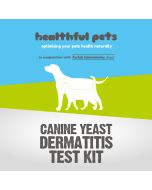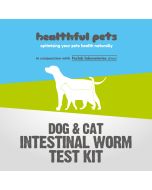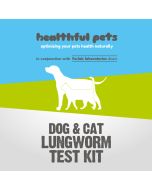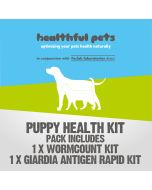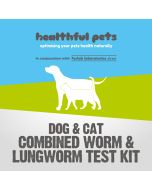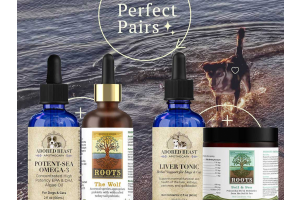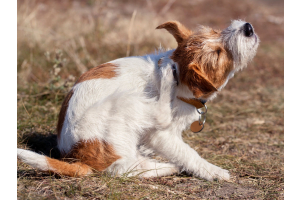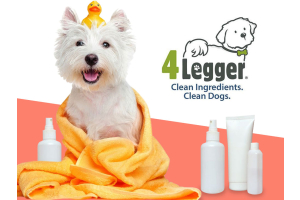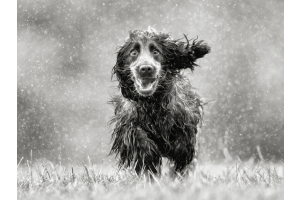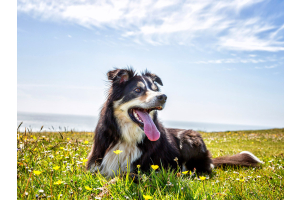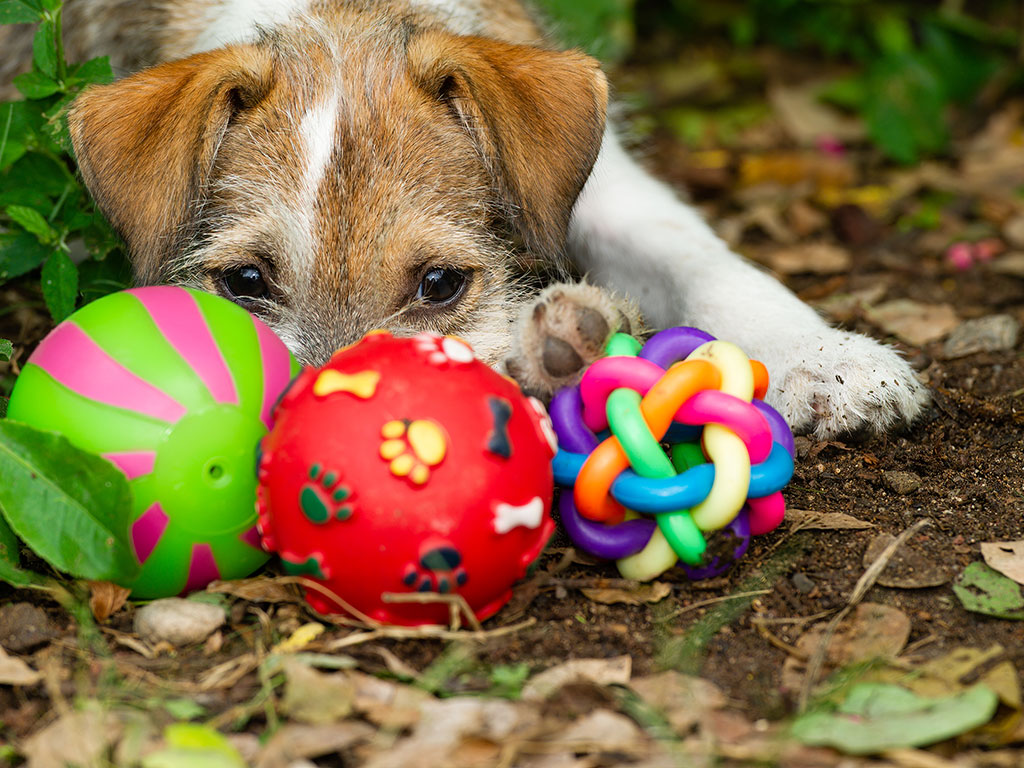
Intestinal Hygiene - Dogs and Cats
There are many types of worms (known as intestinal parasites) that can get into your dog's and cat's GI tract. However some dogs and cats are more vulnerable than others, with an increased risk of contracting an intestinal parasite.
The different types of worms can also affect your dogs in different ways as the symptoms of each type of worm vary as well as the way in which dogs are infected. In the UK, the most common intestinal worms are; roundworms, hookworms, tapeworms and whipworms.
Let's look in detail at each of these worms:-
ROUNDWORMS: These are the most common, especially in puppies. There are two species of roundworm affecting dogs; these are toxocara canis and the less common toxascaris leonine.
Adult roundworms are white, typically 1” to 3” in length but can be up to 7” long. They are spaghetti-like in appearance and are tapered or round – hence the name. They (adult roundworm) live and reproduce in the dog or cats’ small intestine, absorbing nutrients from their diet. Their eggs are shed in the dog’s stool and develop into larvae and the life-cycle is repeated. The eggs are resilient and can remain dormant for years.
Worms are easily transmitted via worm eggs in the stool and on the ground. Roundworm have microscopic eggs, so your dogs and cats typically pick them up from the environment or by eating infected birds or rodents.
Lactating females can transmit roundworm larvae to new-born nursing puppies and kittens through the uterus or milk. Many puppies are born with roundworm as the female can transmit them to her litter during pregnancy. Nursing puppies may also develop an infection from ingesting the larvae of roundworm from their mothers’ milk.
Signs & Symptoms: Many will show no signs of infection at first. Owners will typically diagnose them by a worm in their pet’s stool. Other typical symptoms include a bloated / distended belly, lethargy, diarrhoea or vomiting, weight loss, a dull coat, abdominal pain. Dogs and cats may also cough up (or vomit) worms.
TAPEWORMS: Tape worms (most common species is the Dipylidium caninum) are a long, white, flat-shaped segmented worm which attach themselves with teeth, to the wall of your dog’s small intestine to absorb nutrients as food is digested. Tape worms vary in size from the microscopic to several feet!
Dogs get tapeworms from ingesting fleas, lice, birds, rodents, rabbits or through scavenging or some are direct from dog to dog. Hatched flea eggs consume tapeworm eggs which then develop inside. The dog or cat will then chew itself thus consumes the adult flea with the developing tapeworm released into the host. The young tapeworm will then attach to the small intestine and grows segments. The excreted worm splits into segments like flat grains of rice in the stool. These then break open and the eggs are released. And the cycle is repeated.
Signs & Symptoms: Pets with tape worms often show no signs of discomfort. In the stool you may see what looks like flat grains of rice or rice-like segments stuck to or crawling around the anus. Other symptoms include itchiness around the anus as well as licking of that area, “Butt scooting”, weight loss without loss of appetite or increased appetite without weight gain, poor coat or skin conditions. Also distended or painful abdomen, diarrhoea, tiredness as well as irritability.
As tapeworms are most commonly transmitted via fleas and ticks, re-infection can be prevented by eradicating fleas and ticks.
HOOKWORMS: hookworms (Ancylostoma caniunum and Uncinaria) are another common intestinal parasite which live in the small intestine of your dog or cat (as well as puppies and kittens) and are approximately ½ to ¾ of an inch long. The front of the worm has a hook or teeth-like structure, which attach to the mucosa of the intestine feeding off the host’s blood, they mature, mate and lay eggs that pass in the stool and therefore completing the lifecycle.
Adult dogs and cats can get hookworms from contact with contaminated soil or faeces, containing larvae (young hookworms) that hatch, live in the soil waiting for a suitable host animal to come along.
Your dog or cat can pick up the hookworm larvae from the soil, dew on leaves, contaminated water or faeces or food, through its mouth (ingested) or through the host’s skin (or paw pads); often as a result of grooming. The larvae may enter by burrowing through the skin or feet as a dog is lying on the ground.
Lactating females can transmit hookworm larvae to new-born nursing puppies and kittens through the uterus or milk.
Most adult dogs develop some immunity to hookworms but if the immune system is compromised your dog or cat can be more susceptible to infection.
Signs & Symptoms: Many dogs show no signs of infection at first. By feeding on the blood of the host, hookworms can cause anaemia resulting in pale mucous membranes such as gums. There is also weakness and sometimes black tarry stools. There may also be diarrhoea and vomiting with weight loss. Growth in young animals is stunted and the coat may appear dry and dull.
Hookworm infection can be very serious for young puppies causing blood loss as well as in older animals where the blood loss may be more chronic.
Make sure that toys are not left out in the garden for long periods of time and are cleaned thoroughly.
WHIPWORM: Whipworms are two to three inches long and look like pieces of thread tapered at one end, like a whip. They aren’t common in the UK. They live in the large intestine of dogs where they feed on blood. They can cause irritation of the colon lining with adult worms digging their heads (the thin end) into the intestinal mucosa.
Your dog can get whipworms from swallowing whipworm eggs found in the soil, other substrates containing eggs or water containing dog faeces. They need several weeks in the soil to develop into infective larvae inside their shells. The eggs are extremely resilient and resistant to most cleaning methods and even freezing temperatures.
Ensure dog poop is regularly picked up to help reduce the risk of further contamination of the soil.
Signs & Symptoms: Many pets show no sign of infestation. Symptoms can include diarrhoea, dehydration, vomiting and weight loss
LUNGWORM: Lungworm are a group of parasites that can cause serious health problems (even death if not treated) in both dogs (Angiostrongylus Vasorum or French Heartworm) of all ages and breeds and cats (Angiostrongylus abstrusus), although infections are rare and less severe in cats. The parasite once inside will pass through the lungs but lives mainly in the right side of your dog’s heart. Other strains are Oslerus osleri which is the ‘true’ dog lungworm but this is rare. It lives in little pouches in your dog’s windpipe causing your dog to cough and have difficulty in breathing. Your dog catches it by sniffing or swallowing infected dog poo
There is also the fox lungworm (Crenosoma vulpis) which also lives in your dog’s windpipe, though not in nodules like Oslerus. It is passed on via poo from foxes that have eaten infected slugs and snails, as fox poo can be infested with parasitic worms too.
Lungworm is becoming increasingly common and more cases are being diagnosed as slugs and snails have enjoyed a population explosion due to our increasingly wet weather. Lungworm is widespread in the South East of England and South Wales, it is spreading north. To check your area go to www.lungworm.co.uk/map Please note that this map only shows Angiostrongylus lungworm.
The larvae of the lungworm parasite are carried by infected slugs and snails which can be found in the garden or whilst out on walks. Snails hide in areas of dense vegetation or under objects. Slugs and snails love warm and damp conditions, so spring and autumn are peak times for snail and snug activity. Some dogs will ignore them whilst others are keen to investigate, lick them or to even eat them. Small slugs and snails can purposefully or accidently be swallowed by your dog when they are out playing with toys, rummaging around through the undergrowth, eating grass or drinking from puddles, outside water bowls or ponds. Lungworm larvae can also be found in the slime trail left behind by slugs.
Cats can also be infected by eating a bird or rodent that has itself eaten one of the garden pests.
Younger dogs (as they eat everything!) seem to be more prone to picking up the parasite as well as those that eat slugs and snails. So, if your dog does swallow slugs or snails there is a risk that they could become infected with lungworm.
Lungworm is NOT passed from dog to dog but an infected dog contains the larvae of the parasite in their poop, which increases the risk of other dogs becoming infected. So be careful in multi-dog households who share the same environment.
Prevention
• Stop your dog eating slugs and snails
• Make sure that toys are not left out in the garden for long periods of time and are cleaned thoroughly. As slugs are more active at night there is an increased risk of exposure.
• Make sure that outside bowls are cleaned regularly, and water frequently changed.
• Pick up poo promptly to prevent attracting slugs and snails, as the poo of a dog infected with lungworm will help spread the parasite to other slugs and snails where it can develop.
Signs & Symptoms: Lungworm infections can result in a number of different signs and symptoms, which are also similar to those of other illnesses. There are four main areas of symptoms associated with lungworm in dogs. These include: Breathing Problems (coughing / easily tiring), Poor Blood Clotting (anaemia / excessive bleeding from minor wounds or cuts), Behaviour Changes (depression, lethargy / fits) or General Sickness (weight loss / poor appetite / vomiting/ diarrhoea). That said, unfortunately, many species of lungworm show no symptoms of infection until it is too late.
If you are worried that your cat is showing symptoms similar to the above, especially coughing then speak to your vet.
Prevention - Support for Intestional Hygiene
It is important to protect your dogs and cats from parasites. Firstly it is important to build your dog and cats overall health. Most holistic vets believe that a dog’s ability to withstand parasitic infection is a function of the animal’s overall health. “Dr. Chambreau has some suggestions for those contemplating the use of traditional de-wormers. If you have to treat the dog, do it as minimally as possible. If you know exactly what kind of worms the dog has, treat it for that type of worm only. Don’t give a medication that treats hookworms, tapeworms, whip worms, and roundworms when you have only roundworms.” Pat Miller (2017)
Prevention is key. As with any illness in your dog or cat, the earlier an intestinal worm infestation is diagnosed and treated the better the outcome. Keep an eye out for the signs and symptoms described above as well as following the guidance given, such as picking up faeces as soon as possible.
There are products available that can be used for daily control and protection of intestinal hygiene. These products make the intestine hostile to worms. Some examples of products include:
Verm-X Crunchies (for both dogs and cats), available in three sizes, as well as Verm-x Original Liquid for Dogs, available in two sizes.
Diet’Dog Intestinal Hygiene Control granules a holistic intestinal cleanser to promote digestive hygiene and health in dogs and cats. With its clever blend of beneficial herbs such as wormwood, clove, male fern, gentian, garlic, artemisia cina and thyme, it naturally and gently controls intestinal hygiene, promotes intestinal purge and digestive health.
Seaweed for Dogs; Kanex which uses traditionally Palmaria palmata (Dulse), a red Irish seaweed, has been used as an anti-helminthic, due to the high levels of kainic acid it contains and studies* show pumpkin seeds are also an effective anti-helminthic.
The Neem Team Four Seasons Intestinal Hygiene Control for Cats and Dogs which is a gentle herbal preparation with homeopathic remedies that promotes gut health. Made from 100% natural ingredients with organic cider vinegar, hibiscus, thyme, ginger root, cloves natural salts, organic bitter apple as well as homeopathic remedies. It is a recipe that has been used and trusted for hundreds of years, and tolerated by even the most sensitive animals. This astringent tincture helps promote the flow of bile, tones the gut and maintain a healthy microbiome, making the gut a hostile environment for parasites.
Mr Slobberchops - Don't Bug Me Now is a powdered 'In Food' Supplement for Dogs is made from 100% natural ingredients, offering a unique combination to support your dog from inside out. This product has been formulated specially to work on supporting a dogs immune system to manage internal & external parasites. Ingredients include: Neem Leaf, Basil Leaf, Pumpkin Seed Extract, Peppermint Leaf, Astragulus Root, Yucca, Calendula, Ginger Root.
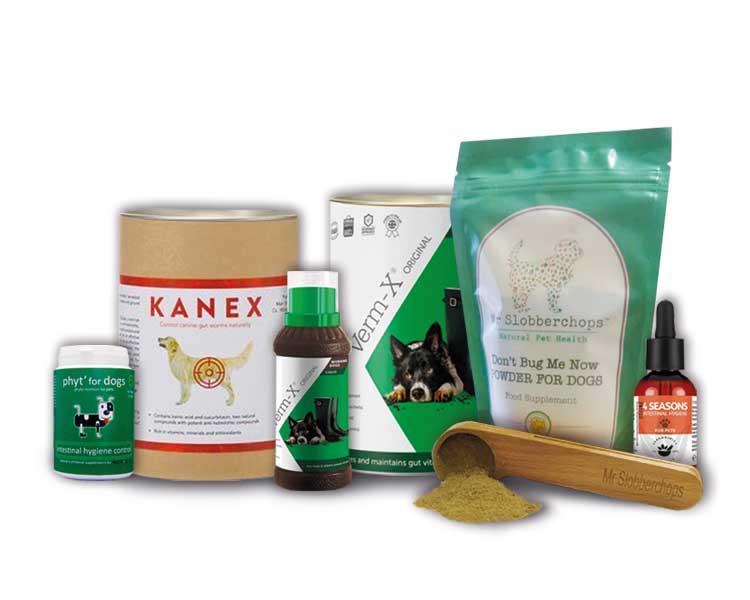
Please note however, these products are for prevention as they make the environment in the gut hostile to worms. Regular use is also essential to kill newly developing adult worms.
In addition, look at supporting the liver and kidneys. Probiotics and digestive enzymes also provide additional support for your dog’s digestive system to help eliminate parasites.
When taking natural remedies, it is also important to check on the internal parasitic health of your pet, through regular testing - see below.
Regular Screening
It is recommended that you carry out regular checks on the parasitic health of your pets gut. This can be done by carrying out regular screening, through a stool sample. These screens provide you with a detailed insight into the interal parasitic health of your pet.
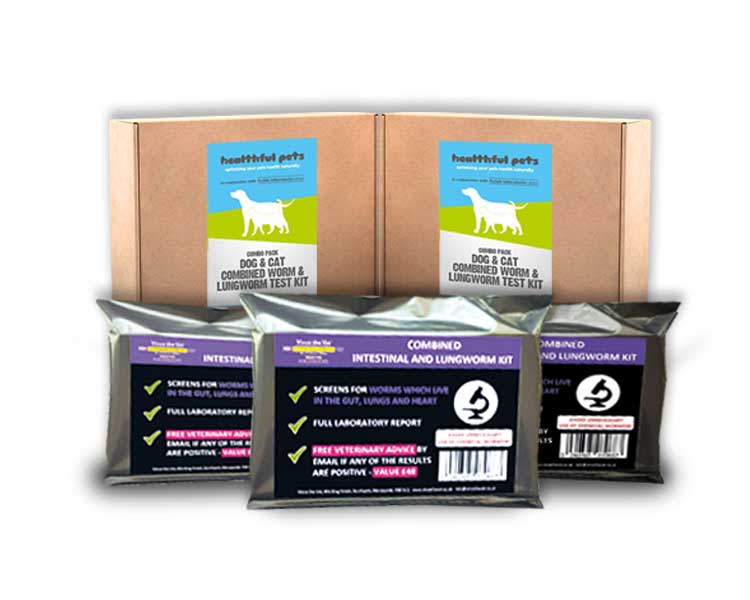
We sell a range of kits that can test for a variety of worms - view our range HERE. You can also contact your Vet, or a veterinary laboratory like www.wormcount.com
Addition Sources of Information:
Is Lungworm in your area: www.lungworm.co.uk/map
References:
Dr Karen Becker (2016) “One of the least savoury aspects of pet ownership that you may not know about” Available at: https://healthypets.mercola.com/sites/healthypets/archive/2016/12/17/pet-intestinal-worms.aspx
Dr Karen Becker (2011) “Trichuris Vulpis: This Intestine-Infesting Parasite is a Serious Issue for Dogs Worldwide” available at: https://healthypets.mercola.com/sites/healthypets/archive/2011/08/04/parasitic-infection-thats-common-in-shelter-dogs.aspx
Rita Hogan “Preventing and Treating Worms in Dogs”
www.wormcount.co.uk “Which Lungworm will your dog catch”? Available at: https://wormcount.com/which-lungworm-will-your-dog-catch/
(Pat Miller) Deworming Products and Parasite Control The Whole Dog Journal. Available at: https://www.whole-dog-journal.com/issues/1_10/features/Deworming-and-Parasite-Control_5283-1.html
Rita Hogan (2016) Preventing and Treating Worms in Dogs. Available from: http://www.dogsnaturallymagazine.com/preventing-treating-worms-dogs/
